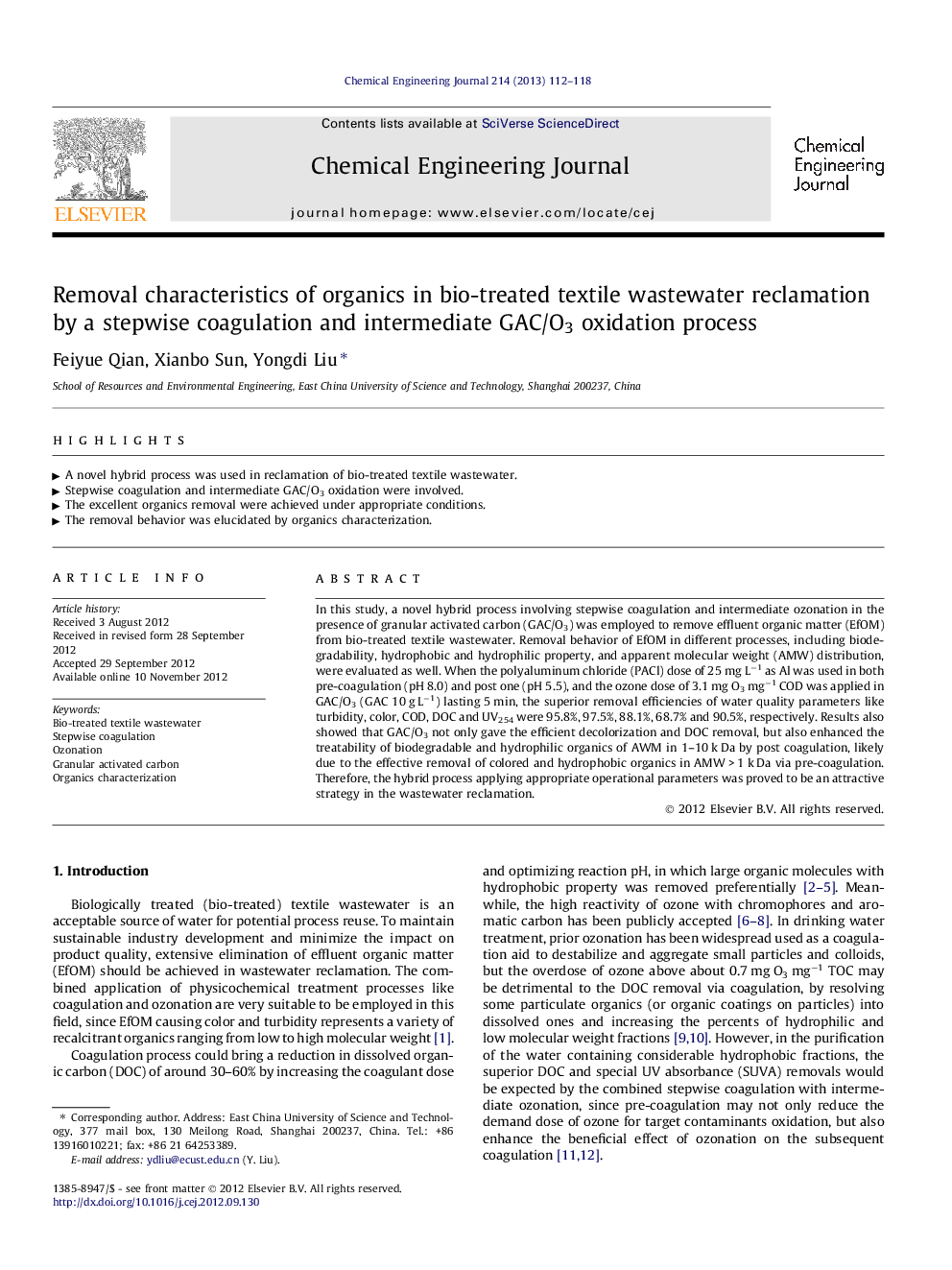| Article ID | Journal | Published Year | Pages | File Type |
|---|---|---|---|---|
| 149041 | Chemical Engineering Journal | 2013 | 7 Pages |
In this study, a novel hybrid process involving stepwise coagulation and intermediate ozonation in the presence of granular activated carbon (GAC/O3) was employed to remove effluent organic matter (EfOM) from bio-treated textile wastewater. Removal behavior of EfOM in different processes, including biodegradability, hydrophobic and hydrophilic property, and apparent molecular weight (AMW) distribution, were evaluated as well. When the polyaluminum chloride (PACl) dose of 25 mg L−1 as Al was used in both pre-coagulation (pH 8.0) and post one (pH 5.5), and the ozone dose of 3.1 mg O3 mg−1 COD was applied in GAC/O3 (GAC 10 g L−1) lasting 5 min, the superior removal efficiencies of water quality parameters like turbidity, color, COD, DOC and UV254 were 95.8%, 97.5%, 88.1%, 68.7% and 90.5%, respectively. Results also showed that GAC/O3 not only gave the efficient decolorization and DOC removal, but also enhanced the treatability of biodegradable and hydrophilic organics of AWM in 1–10 k Da by post coagulation, likely due to the effective removal of colored and hydrophobic organics in AMW > 1 k Da via pre-coagulation. Therefore, the hybrid process applying appropriate operational parameters was proved to be an attractive strategy in the wastewater reclamation.
► A novel hybrid process was used in reclamation of bio-treated textile wastewater. ► Stepwise coagulation and intermediate GAC/O3 oxidation were involved. ► The excellent organics removal were achieved under appropriate conditions. ► The removal behavior was elucidated by organics characterization.
